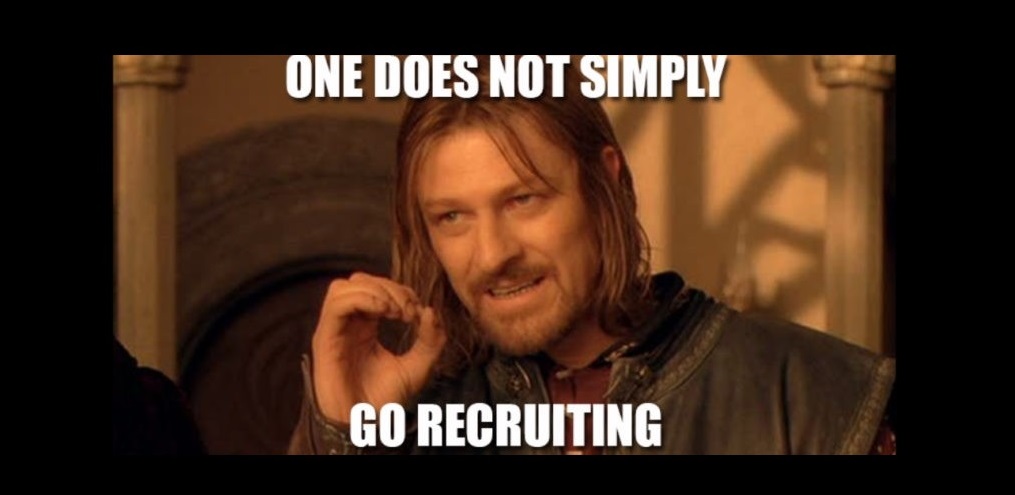How A Recruiting Process Should Look
by Adam Rosenfield, SHRM-CP
 This much we know: COVID-19 has altered the way the world works.
This much we know: COVID-19 has altered the way the world works.
But COVID shouldn’t change the way you go about your recruiting process.
Recruiting stages are going from site visits, in-person interviews and closing dinners to constant Zoom meetings interrupted by children, dogs, or shoddy internet connections. While the locations have changed, those companies who already adopted human centric practices were fully ready for the shifting dynamics.
Regardless of if you’re a 20 person company, or a 50,000 person company, developing consistent recruitment processes are key to the success of your organization. A good process ensures the right people come onboard, an easy onboarding and a fast track to success. A bad recruitment process hurts an employment brand, causes turnover, and makes it even more difficult to find the best talent for your organization.
So how should you go about structuring your recruiting processes?
It Starts Before You Post the Job
Some may think you start recruiting the second you post the job. In reality, it starts when you determine a position.
As a founder or leadership team, you should be thinking of a number of questions as you develop the role:
- Why is the position available?
- Why are we creating this position/why is someone leaving?
- What are mission critical skills that this person needs to have?
- What is the reporting structure?
- Are “preferred” qualifications preferred because they are necessary? Or are they strictly nice-to-haves?
- What is the career trajectory for this future hire?
- What are the key success metrics for 30 days, 60 days, 90 days, six months and one year from hire?
- Do we have the right salary bands?
With those questions answered, you’re able to paint a better picture of the role for candidates throughout the interview process.
The Process
Too many companies treat recruiting as a “fly by night” process. Meaning, they tend to create the process as candidates come through the pipeline.
Your process should be one of the first parts of the hiring process you standardize. For many companies it looks like this:
Application – a simple sending of the candidate’s resume to your applicant tracking system. Some companies include some screening questions to judge applicant viability.
Recruiter Screen – Usually no more than 30 minutes, this covers general behavioral and company culture-based questions and some light subject matter expertise.
Hiring Manager Interview – This is a technical interview focused on the competencies of the job.
Board/Panel Interview – This interview may be with members of multiple departments and will focus on technical competency and situational questions.
Hire – the best part of the whole process!
Some companies have a case study after a screen or the hiring manager interview, to affirm the candidate has the hard skills and critical thinking ability necessary to succeed in the role.
The key to the process is consistency. For each role you hire for, the same people should be performing the same part of the interview process. This way all candidates get the chance to be compared against each other in a fair, even way.
Use a Rubric for Questions
Your company most likely carries a mixture of people who are both experienced interviewers and those who are new at the trade. Either way, bias can run rampant if you do not standardize how you judge the responses of candidates to your interview questions.
We recommend creating an interview rubric that lists the questions, and a scoring scale from 0-3, with examples of what answers that correlate to each number look like. Another great tool is an interview plan, timed to how long you think the greeting, answer portion, and candidate questioning session should be. This allows everyone to follow a structure, and prevents an interview team member who is overly chatty from taking over the interview. Additionally, this gives all candidates an opportunity to be judged evenly.
Communication is Key
Where most interview plans fail is candidate communication. These breakdowns occur for a variety of reasons:
- The recruiter and the hiring manager are not in sync when it comes to a timeline
- The hiring plan isn’t followed
- The recruiter does not accurately communicate the interview stages to the candidate
- Companies try to collect resumes rather than actively interview candidates
- The pipeline is not properly maintained
There are plenty of easy ways around these common pitfalls.
- Set up a goal timeline to make a hire before you start the interview process.
- Use your applicant tracking system (or an excel spreadsheet if you don’t have an ATS) to keep track of your candidates.
- Ensure you truly have the budget to make the hires you want.
- Receive and present timely feedback.
- Put yourself in the candidate’s shoes- the most important one.
Making the Hire
Making the hire is the best part of the process. It should be exciting. Before you send that form email, call the candidate! Express your excitement, and verbally offer before anything else, especially if you’re a small company. It goes a long way towards establishing rapport with your new hire.
The Rejection Emails
Once the candidate has been chosen and accepted, swiftly reject the rest of your candidates. For those who made it further in the recruitment process, make sure to personalize your rejection.
Creating a human-centric recruitment process goes a long way in establishing credibility with your candidates, your future hires and even your employees. It is imperative. Without a direction, a plan, or a clear job description, you’re going to end up hurting your brand when it comes to finding your next hire.
________________
If you want to know more about how AustinPeopleWorks can help you with your recruiting efforts, please contact us – https://austinpeopleworks.com/contact
